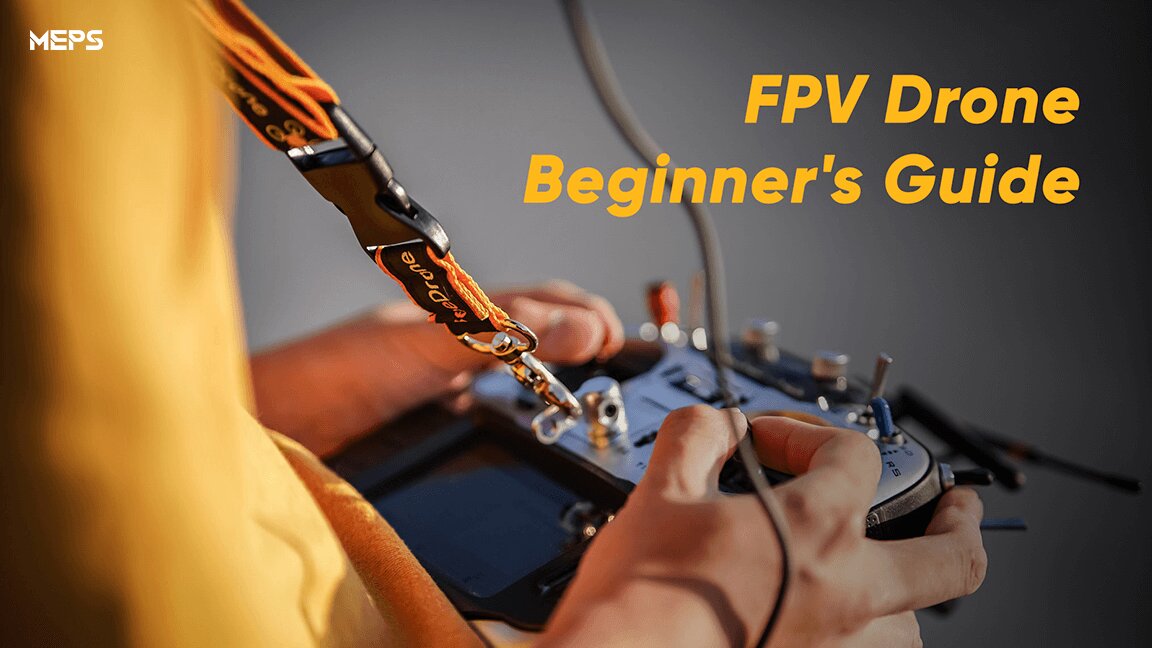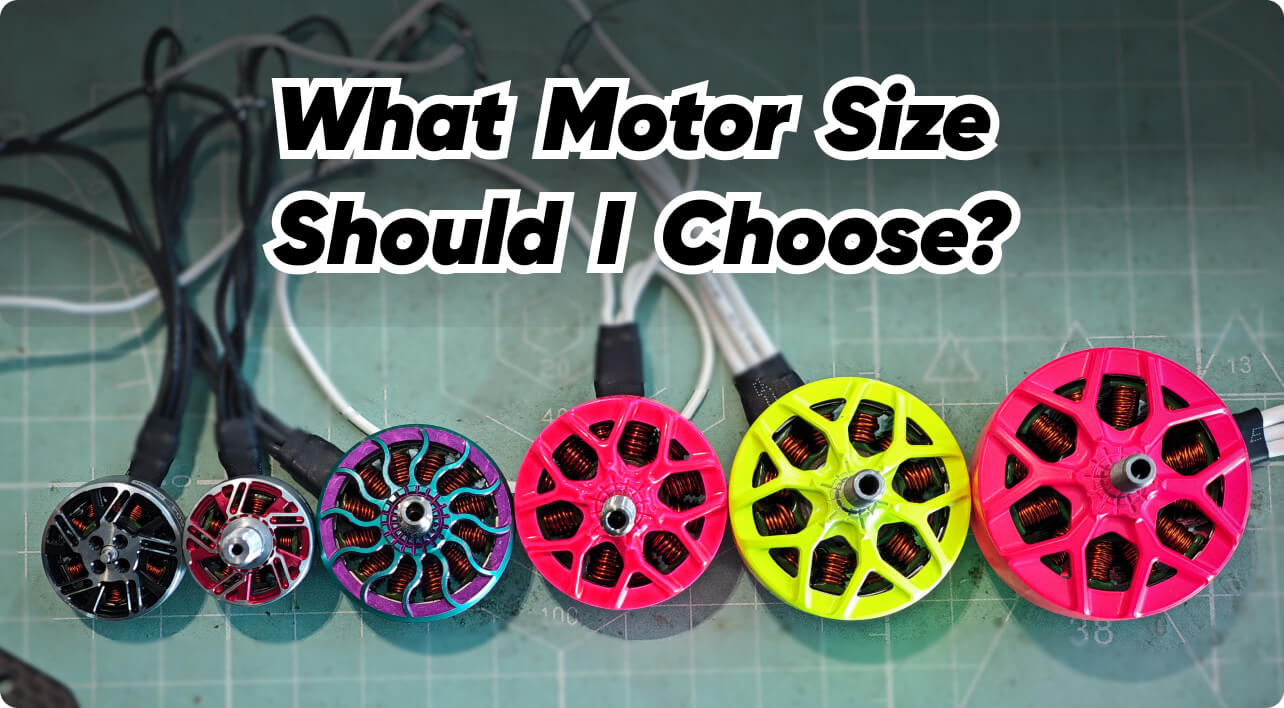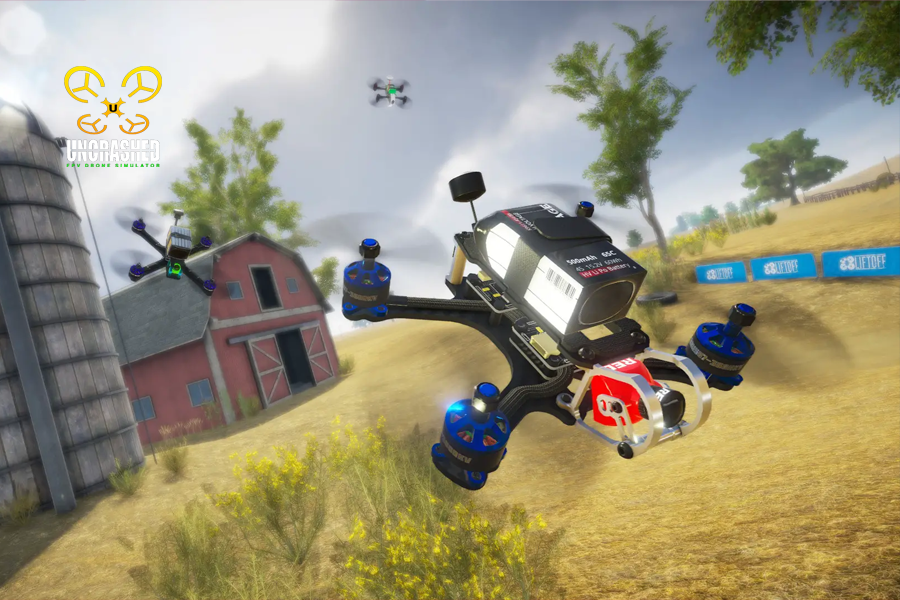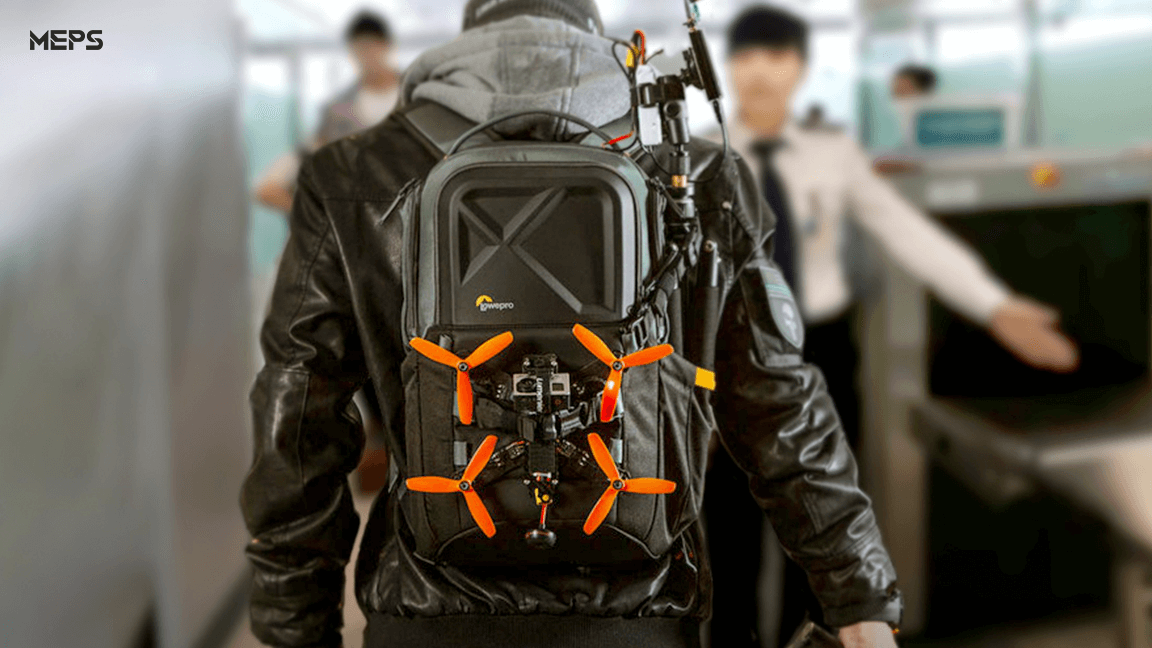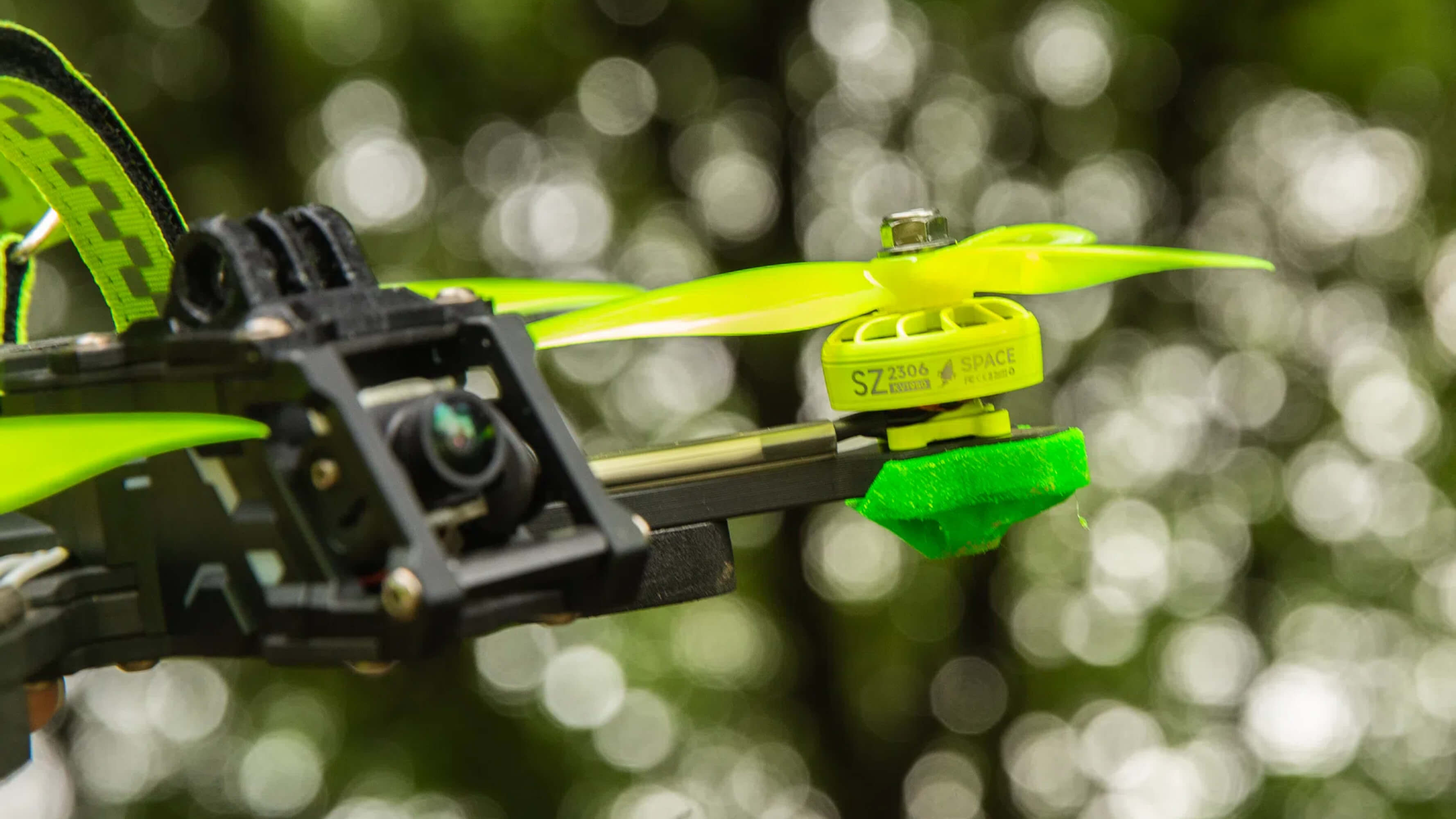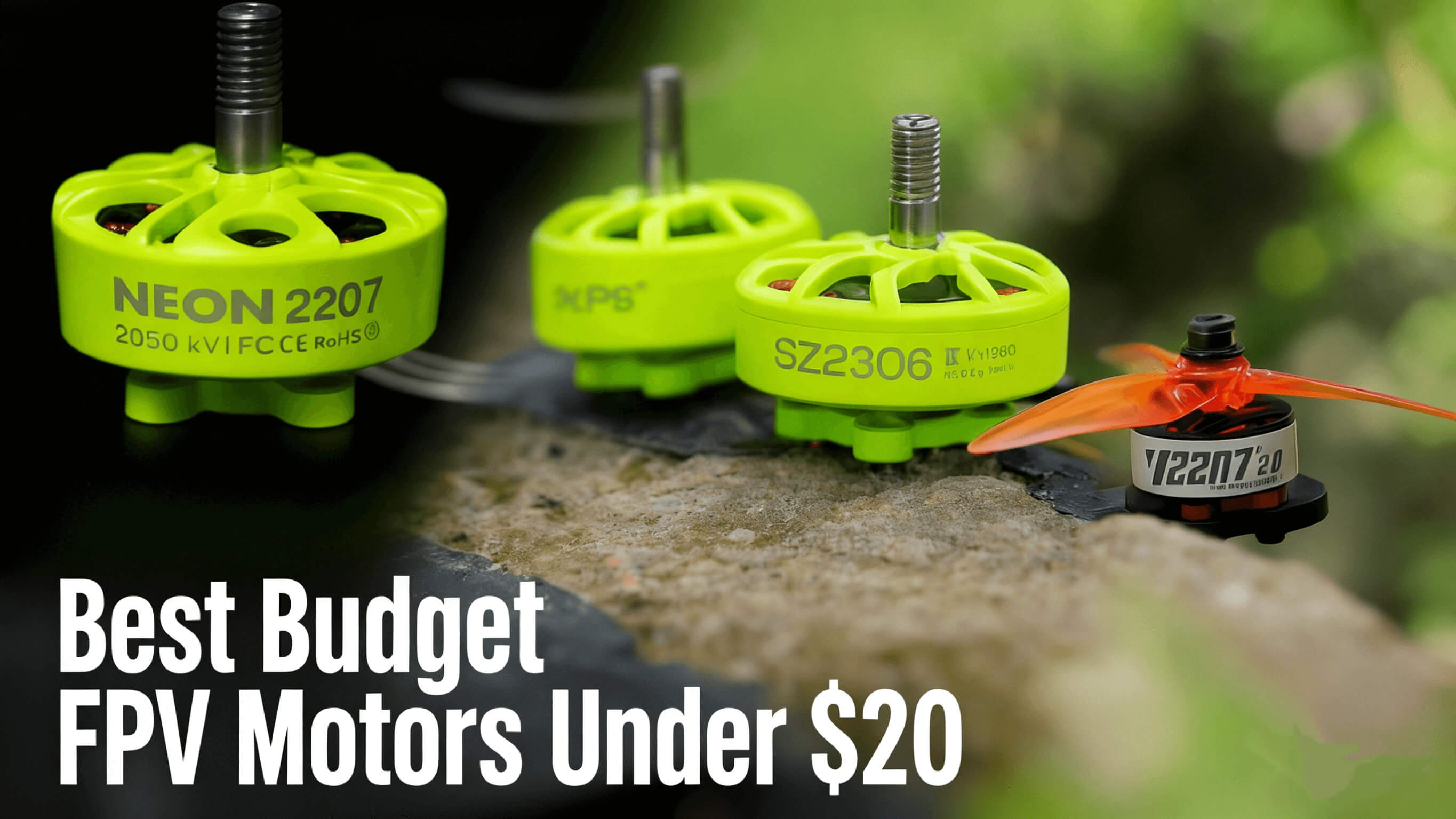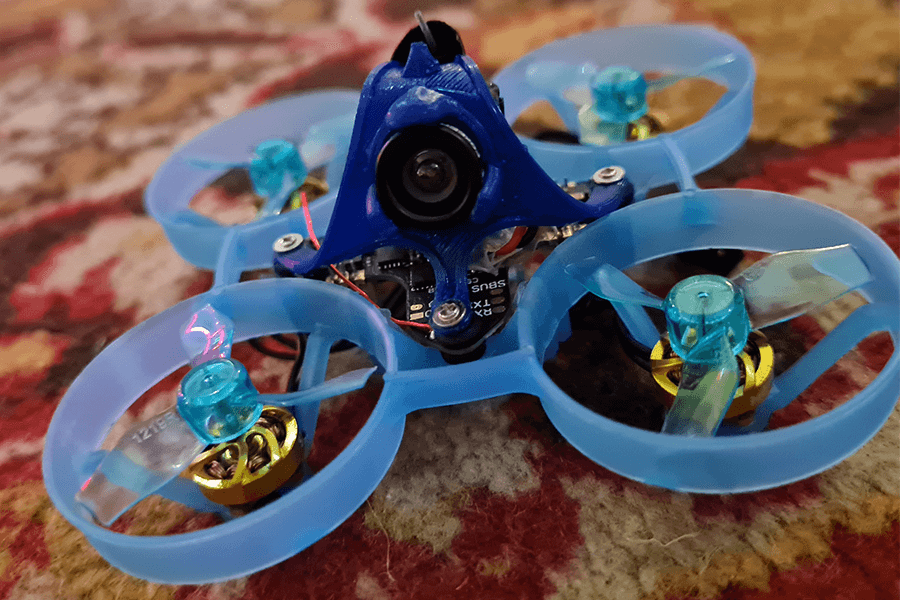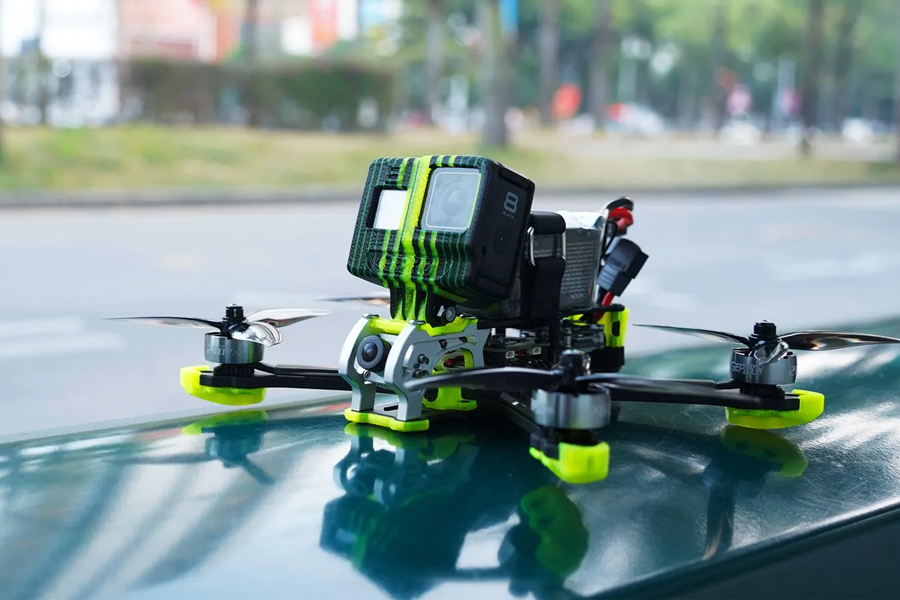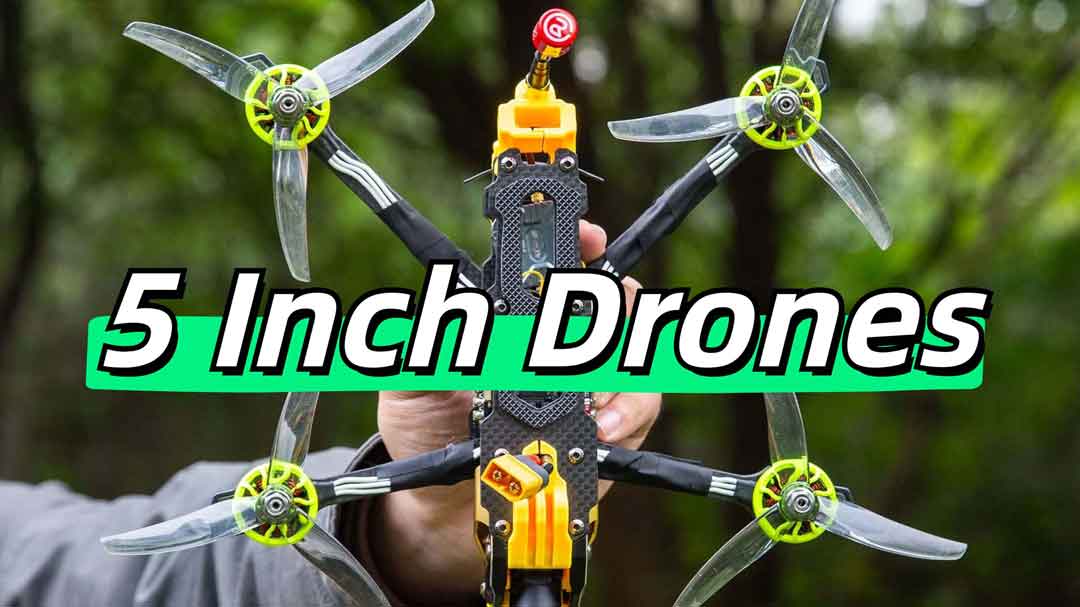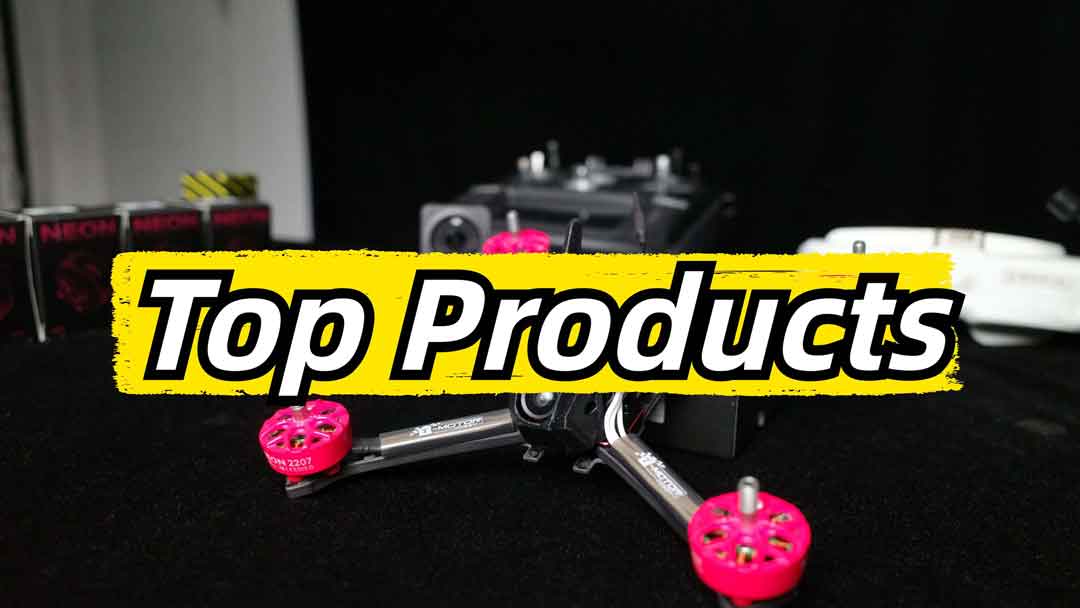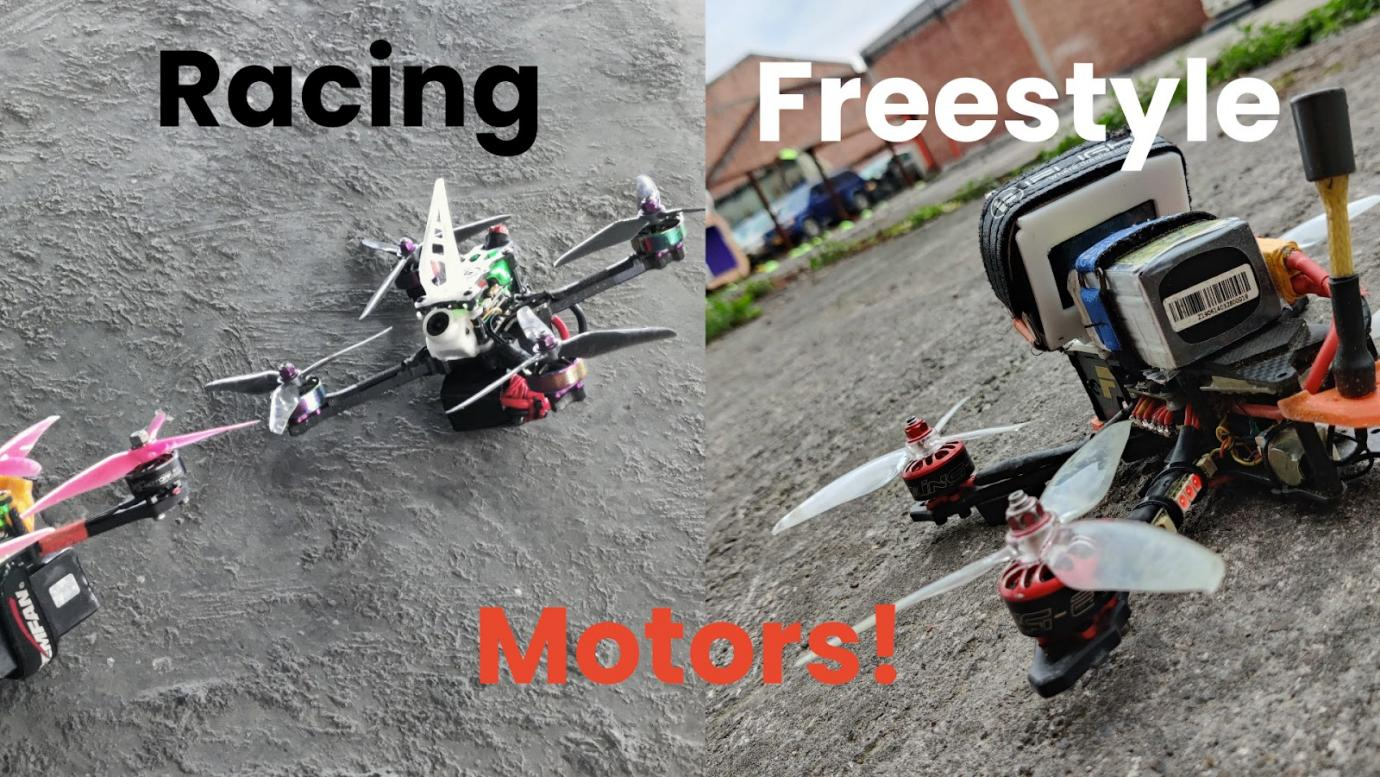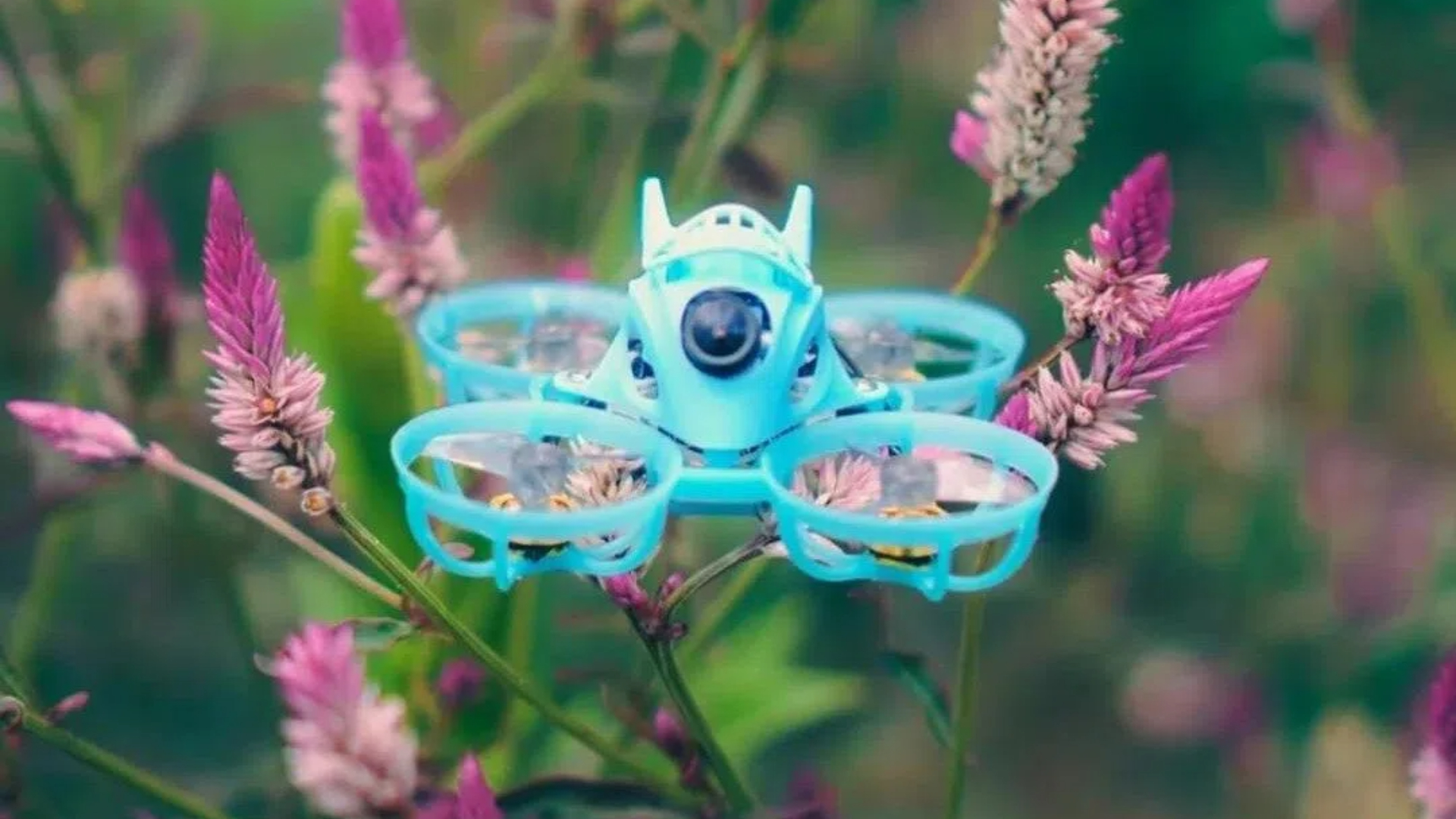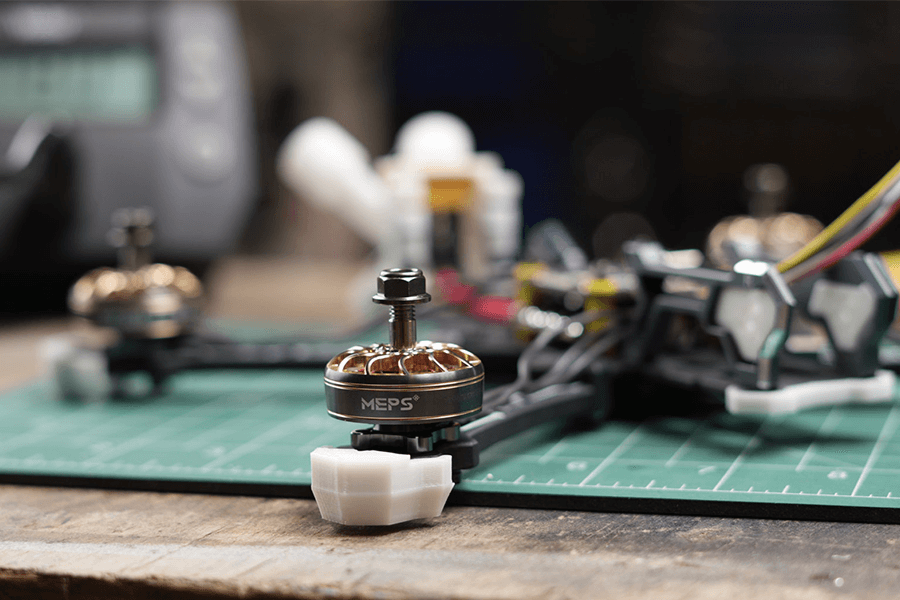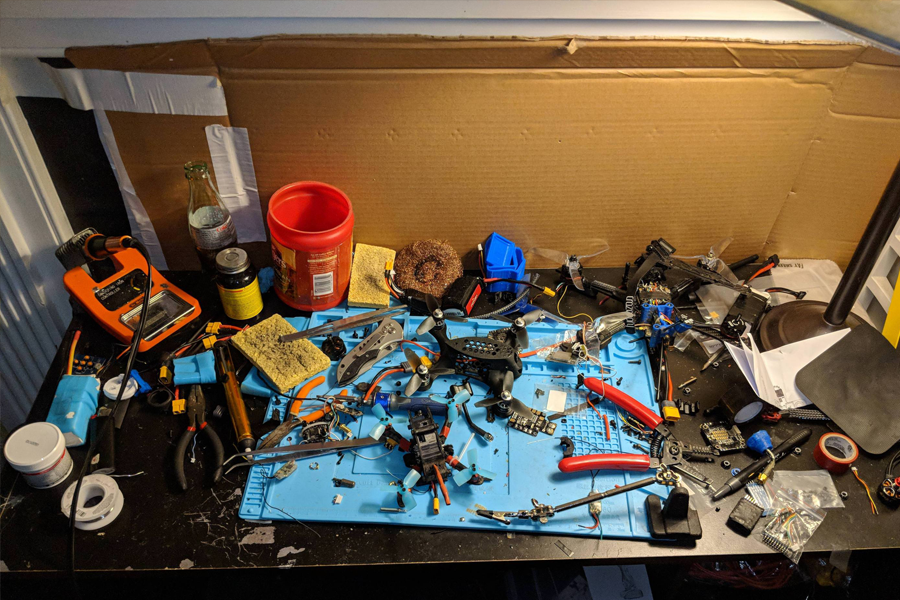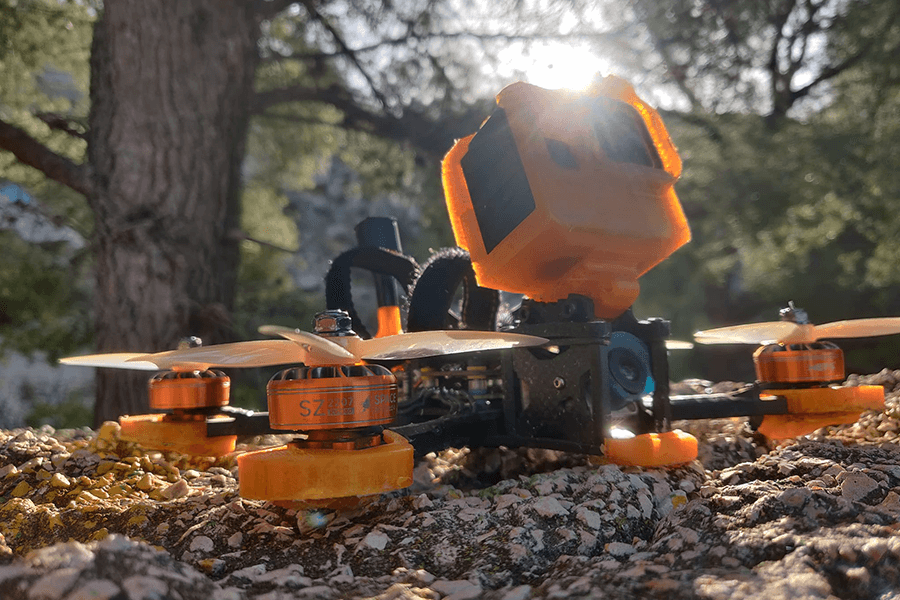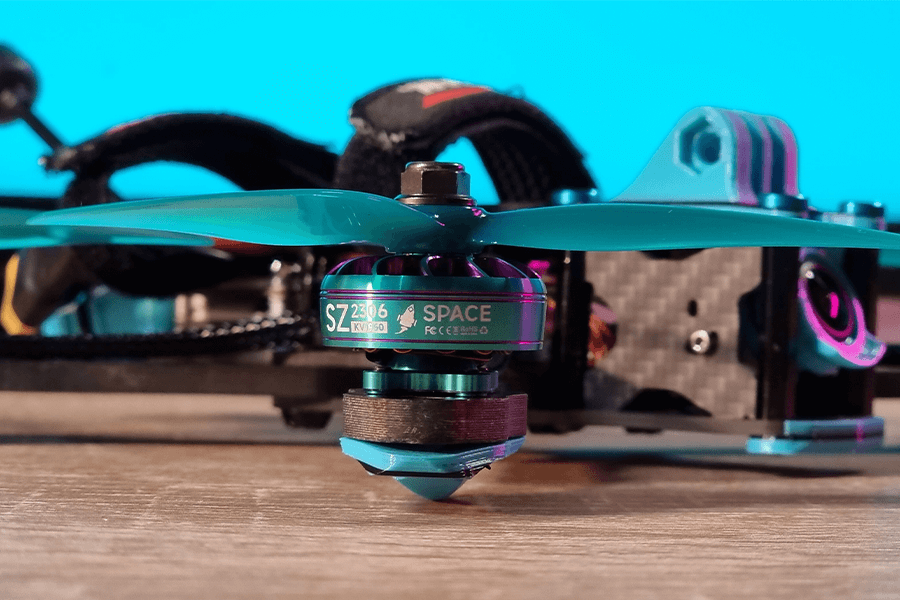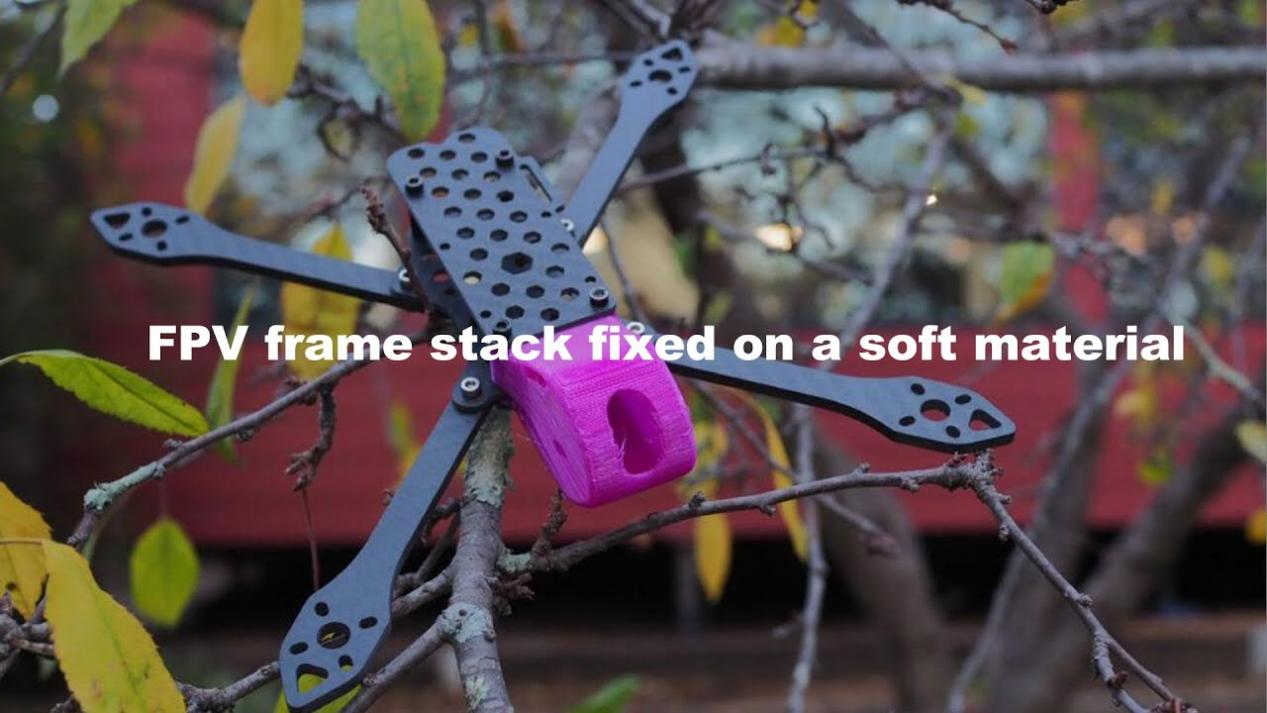Beginner’s Guide
-
FPV Attach Props to Motors (Step-by-Step)
Attaching FPV props to motors is easy if done right. Identify motor rotation (CW/CCW) Match props to correct motors And choose the proper mounting method—prop nuts, T-mount, or press-fit. Align the props on motor shafts, secure them using prop nuts or screws Always check prop orientation, top/bottom, and tightness for safe, stable FPV flights. Why Properly Attaching Props Matters in FPV Builds Correctly installing your FPV propellers is crucial for: Flight performance: Properly attached props reduce vibration and improve thrust efficiency. Safety: Loose props can fly off mid-air, causing crashes or injuries. Component longevity: Correct tension prevents damage to motor shafts and bearings. Whether you’re a beginner or a seasoned FPV pilot, mastering prop installation is a must. See the guide to help you choose the best FPV propellers: Choose Best Suitable Propellers for Your FPV. Tools and Parts You’ll Need Before attaching your FPV props to motors, prepare these tools and parts: A set of FPV propellers (CW and CCW pairs) FPV motors (brushless motors with threaded shafts or T-mounts) Prop nuts or screws (depending on motor type) A prop nut wrench or driver tool: Usually a spanner or socket wrench for 8mm prop tool Safety gear (gloves and goggles) Having the right…- 0
- 0
- 226
-
What Boards Does BetaFlight Not Support Anymore?
As Betaflight continues to evolve, not every flight controller can keep up. Many older boards have reached the point where they simply don't meet the firmware's modern requirements. That's why more pilots are asking the same question: What boards does Betaflight not support anymore? The short answer: any board running outdated processors like F1 and many F3 flight controllers no longer receive active Betaflight development. Several older F4 variants have also lost support because of memory limits, lack of resources, or manufacturer abandonment. This guide breaks down exactly which boards Betaflight dropped, why they lost support, and what FPV pilots should upgrade to in 2026. Why Betaflight Stops Supporting Certain Flight Controller Boards? To understand which flight controller boards Betaflight doesn't support anymore, you first need to understand why they drop them. Here are the real reasons — not marketing talk: CPU Performance Hits a Wall Old processors like F1 and F3 simply don't have the speed or memory to run modern Betaflight features: RPM filtering Dynamic Notch Gyro 4K/8K sync Bidirectional DShot ELRS V3 compatibility New OSD functions Trying to fit Betaflight 4.x on an F3 is like trying to run Windows 11 on a 10-year-old phone. Flash Memory is Too…- 0
- 0
- 25
-
Can you take drone on a plane?
It can be a fantastic idea to bring a drone along for your travels in order to take some incredible pictures of your family or to record a breathtaking landscape. There are other restrictions to take into account, though. You can feel more at ease with the aid of our guide. Can you take a drone on a plane? Yes, you can take a drone on a plane. The only strict rule is: all drone batteries (Li-ion/LiPo) must be in your carry-on bag, not checked luggage. This will vary depending on the airline and the destination country. Before deciding to bring your drone on a flight, it is advised that you confirm with the airline and the local Civil Aviation Authority (or equivalent) of your destination. The following provides an overview of what passengers need to know when flying with drones on select airlines and outlines restrictions on drone usage in certain countries. Both TSA (Transportation Security Administration) and FAA (Federal Aviation Administration) permit travelers to carry drones through airport security and bring them onboard. What TSA Says TSA officially states that drones are permitted through security checkpoints. They may, however, require additional screening. What FAA Says FAA’s rules focus…- 0
- 0
- 487
-
FPV Freestyle Tricks Tutorial
FPV freestyle flying is an exciting and creative form of drone piloting, where the focus is on performing stunning aerial tricks and stunts with fluid motion and full control. Unlike FPV racing or cinematic FPV, freestyle allows pilots to express themselves through maneuvers like power loops, barrel rolls, and advanced tricks such as Madd flips and juicy flicks. This guide will cover the essential beginner tricks, including yaw spins and front/back flips, and help you progress to more complex maneuvers. Additionally, we’ll explore how to build smooth combos, manage throttle effectively, and avoid common mistakes to ensure a safe and exciting flight experience. What Is FPV Freestyle Flying? FPV (First Person View) freestyle flying is a thrilling branch of drone piloting where the focus is on performing tricks, stunts, and expressive flight movements. Unlike racing, which is based on speed and precision, or cinematic FPV which aims for smooth shots, freestyle is all about creativity, fluid motion, and mastering full control of your drone in three-dimensional space. Freestyle flying typically uses 5-inch quadcopters due to their balance of power, agility, and stability. These drones are often custom-built with durable frames, high-thrust motors, and responsive flight controllers. Freestyle also requires a…- 0
- 0
- 859
-
GoPro on FPV Drones: Complete Beginner Guide
Flying FPV drones is one of the coolest hobbies you can have. When you add a GoPro to your drone, your flights become even more special: the camera turns everything into a high-quality, cinematic experience. You can capture smooth shots, fast movements, and amazing landscapes in a way that feels like you’re really inside the drone. A lot of beginners ask me the same thing: "Can you use GoPro for FPV?" Yes, absolutely—you can use a GoPro for FPV, and it’s actually the most popular action camera in the FPV world. I'm MaikFPV and after spending a lot of time flying, crashing, learning, and improving, I’ve tested many ways to get better footage from my flights. In this guide, I want to share everything I've learned in a simple and clear way, so you can start getting amazing results too. In this article, I'll explain how to use a GoPro on your FPV drone, how to mount it safely, the best FPV GoPro settings, and some pro tips to get amazing footage every time. Can You Use GoPro for FPV? Yes, absolutely! You can use a GoPro for FPV drones, and it's one of the best and most common cameras pilots use to record their flights. The one above it's my setup! It's easy to set up your camera, it gives you great video quality, and it works well in almost every flying situation. Whether you're flying: freestyle (juicy, fast, and acrobatic) cinematic cruising (smooth low-angle lines, mountains, buildings) long-range (7” rigs, cruising for kilometers) cinewhoops (indoor shoots, tight spaces, close-proximity flying) A GoPro handles all of it extremely well. The colors, sharpness, dynamic range, and stabilization options make it the go-to camera for FPV drones. Why…- 0
- 0
- 40
-
Best Budget FPV Motors Under $20
Finding a high-quality FPV motor under $20 may sound difficult—especially in a hobby where premium motors often cost $25–$35 each. But the good news is that the budget FPV motor segment has improved dramatically over the past few years. Today, you can get reliable, efficient, and surprisingly powerful motors for micro drones, tiny whoops, cinewhoops, and even 5-inch freestyle quads without spending a fortune. In this ultimate 2025 guide, we break down the best budget FPV motors under $20, what to expect from them, what trade-offs you’ll face, and how to choose the right motor for your build. Whether you’re building a budget 5-inch rig, repairing a tiny whoop, or simply looking for affordable training motors, this article covers everything you need. Best Budget FPV Motors Under $20 (Top Picks for 2025) Now let’s look at the best motors available today for under $20. These motors cover different categories—from tiny whoops to 5-inch freestyle rigs. MEPS NEON 2207 motor For FPV freestyle drones, the MEPS NEON 2207 motor is widely considered a high-value pick under $20 because of its strength, robustness, and affordability. Reviews emphasize its smooth performance, robust thrust, and crash resistance because of its unibell design and ratchet-shaped cover. …- 0
- 0
- 37
Recent posts
- How to Choose Best Indoor Drone&Parts 06/12/2025
- FPV Attach Props to Motors (Step-by-Step) 06/12/2025
- Best FPV Drone Parts for 5 Inch Freestyle Drones 02/12/2025
- What Boards Does BetaFlight Not Support Anymore? 01/12/2025
- Can you take drone on a plane? 28/11/2025
- FPV Freestyle Tricks Tutorial 27/11/2025
- GoPro on FPV Drones: Complete Beginner Guide 26/11/2025
Builds
-
How to Choose Best Indoor Drone&Parts
We will discuss the possible justifications for flying best indoor drone, let's examine the many kinds of best indoor drones that are now available including 2.5 or 3 inch toothpick, 65mm and 75mm tinywhoop, and 2 to 2.5 inch cinewhoop. What are the benifits of indoor drone? An innovative and thrilling approach to experience the thrill of drone flying without being constrained by the weather or location is indoor FPV flight. The following are some advantages of flying indoor FPV drones: The ability to fly in any weather: flyingIndoor FPV drone enables you to take part in the activity regardless of the weather outside, making it a wonderful choice for people who live in regions with bad weather. Increased control and precision:It is possible with indoor flying since you can fly in a controlled environment. Improve your flying skill: If you are a beginner, it is a good choice to fly indoors to practice, which can improve your flying skill. The ability to fly all year round: Indoor FPV drone flying is a fantastic activity to take up and enjoy because it is not season-dependent. Fly safety: Flying indoors avoids numerous risks connected with flying outdoors, including the possibility of colliding with structures or electricity…...- 0
- 0
- 664
-
FPV Attach Props to Motors (Step-by-Step)
Attaching FPV props to motors is easy if done right. Identify motor rotation (CW/CCW) Match props to correct motors And choose the proper mounting method—prop nuts, T-mount, or press-fit. Align the props on motor shafts, secure them using prop nuts or screws Always check prop orientation, top/bottom, and tightness for safe, stable FPV flights. Why Properly Attaching Props Matters in FPV Builds Correctly installing your FPV propellers is crucial for: Flight performance: Properly attached props reduce vibration and improve thrust efficiency. Safety: Loose props can fly off mid-air, causing crashes or injuries. Component longevity: Correct tension prevents damage to motor shafts and bearings. Whether you’re a beginner or a seasoned FPV pilot, mastering prop installation is a must. See the guide to help you choose the best FPV propellers: Choose Best Suitable Propellers for Your FPV. Tools and Parts You’ll Need Before attaching your FPV props to motors, prepare these tools and parts: A set of FPV propellers (CW and CCW pairs) FPV motors (brushless motors with threaded shafts or T-mounts) Prop nuts or screws (depending on motor type) A prop nut wrench or driver tool: Usually a spanner or socket wrench for 8mm prop tool Safety gear (gloves and goggles) Having the right…...- 0
- 0
- 226
-
Best FPV Drone Parts for 5 Inch Freestyle Drones
Best 5” freestyle FPV drones & parts 5 inch FPV drones are the most popular option since they are versatile, balanced, and suitable for a variety of flying techniques. These 5 inch freestyle FPV are readily available, inexpensive, and capable of carrying action cameras. I have chosen a list of drone parts that includes every element required for a full 5 inch build. Motor What is freestyle motor? In contrast to drone racing, which merely entails completing an obstacle course as quickly as possible, FPV freestyle entails maneuvering through narrow gaps, around obstacles, under trees, and through tight turns while performing tricks. Motor weight, Power (thrust), Efficiency (grams per watt), Torque and response (RPM changes) are the crucial factors of choosing 5 inch freestyle motor. Best freestyle motors must: Deliver strong mid-range torque for snappy maneuvers Offer smooth throttle resolution for precise control Withstand crashes (especially bando flying) Maintain efficiency to keep flight times reasonable How to select the right KV values for your 5 inch FPV freestyle drone motors? One of the most contentious issues in FPV right now is whether beginners should choose 4S or 6S batteries. Although 6S is thought to have a modest performance advantage, it…...- 0
- 1
- 1.7k
Parts
-
How to Choose Best Indoor Drone&Parts
We will discuss the possible justifications for flying best indoor drone, let's examine the many kinds of best indoor drones that are now available including 2.5 or 3 inch toothpick, 65mm and 75mm tinywhoop, and 2 to 2.5 inch cinewhoop. What are the benifits of indoor drone? An innovative and thrilling approach to experience the thrill of drone flying without being constrained by the weather or location is indoor FPV flight. The following are some advantages of flying indoor FPV drones: The ability to fly in any weather: flyingIndoor FPV drone enables you to take part in the activity regardless of the weather outside, making it a wonderful choice for people who live in regions with bad weather. Increased control and precision:It is possible with indoor flying since you can fly in a controlled environment. Improve your flying skill: If you are a beginner, it is a good choice to fly indoors to practice, which can improve your flying skill. The ability to fly all year round: Indoor FPV drone flying is a fantastic activity to take up and enjoy because it is not season-dependent. Fly safety: Flying indoors avoids numerous risks connected with flying outdoors, including the possibility of colliding with structures or electricity…- 0
- 0
- 664
-
Best FPV Drone Parts for 5 Inch Freestyle Drones
Best 5” freestyle FPV drones & parts 5 inch FPV drones are the most popular option since they are versatile, balanced, and suitable for a variety of flying techniques. These 5 inch freestyle FPV are readily available, inexpensive, and capable of carrying action cameras. I have chosen a list of drone parts that includes every element required for a full 5 inch build. Motor What is freestyle motor? In contrast to drone racing, which merely entails completing an obstacle course as quickly as possible, FPV freestyle entails maneuvering through narrow gaps, around obstacles, under trees, and through tight turns while performing tricks. Motor weight, Power (thrust), Efficiency (grams per watt), Torque and response (RPM changes) are the crucial factors of choosing 5 inch freestyle motor. Best freestyle motors must: Deliver strong mid-range torque for snappy maneuvers Offer smooth throttle resolution for precise control Withstand crashes (especially bando flying) Maintain efficiency to keep flight times reasonable How to select the right KV values for your 5 inch FPV freestyle drone motors? One of the most contentious issues in FPV right now is whether beginners should choose 4S or 6S batteries. Although 6S is thought to have a modest performance advantage, it…- 0
- 1
- 1.7k
-
GoPro on FPV Drones: Complete Beginner Guide
Flying FPV drones is one of the coolest hobbies you can have. When you add a GoPro to your drone, your flights become even more special: the camera turns everything into a high-quality, cinematic experience. You can capture smooth shots, fast movements, and amazing landscapes in a way that feels like you’re really inside the drone. A lot of beginners ask me the same thing: "Can you use GoPro for FPV?" Yes, absolutely—you can use a GoPro for FPV, and it’s actually the most popular action camera in the FPV world. I'm MaikFPV and after spending a lot of time flying, crashing, learning, and improving, I’ve tested many ways to get better footage from my flights. In this guide, I want to share everything I've learned in a simple and clear way, so you can start getting amazing results too. In this article, I'll explain how to use a GoPro on your FPV drone, how to mount it safely, the best FPV GoPro settings, and some pro tips to get amazing footage every time. Can You Use GoPro for FPV? Yes, absolutely! You can use a GoPro for FPV drones, and it's one of the best and most common cameras pilots use to record their flights. The one above it's my setup! It's easy to set up your camera, it gives you great video quality, and it works well in almost every flying situation. Whether you're flying: freestyle (juicy, fast, and acrobatic) cinematic cruising (smooth low-angle lines, mountains, buildings) long-range (7” rigs, cruising for kilometers) cinewhoops (indoor shoots, tight spaces, close-proximity flying) A GoPro handles all of it extremely well. The colors, sharpness, dynamic range, and stabilization options make it the go-to camera for FPV drones. Why…- 0
- 0
- 40
-
Best Budget FPV Motors Under $20
Finding a high-quality FPV motor under $20 may sound difficult—especially in a hobby where premium motors often cost $25–$35 each. But the good news is that the budget FPV motor segment has improved dramatically over the past few years. Today, you can get reliable, efficient, and surprisingly powerful motors for micro drones, tiny whoops, cinewhoops, and even 5-inch freestyle quads without spending a fortune. In this ultimate 2025 guide, we break down the best budget FPV motors under $20, what to expect from them, what trade-offs you’ll face, and how to choose the right motor for your build. Whether you’re building a budget 5-inch rig, repairing a tiny whoop, or simply looking for affordable training motors, this article covers everything you need. Best Budget FPV Motors Under $20 (Top Picks for 2025) Now let’s look at the best motors available today for under $20. These motors cover different categories—from tiny whoops to 5-inch freestyle rigs. MEPS NEON 2207 motor For FPV freestyle drones, the MEPS NEON 2207 motor is widely considered a high-value pick under $20 because of its strength, robustness, and affordability. Reviews emphasize its smooth performance, robust thrust, and crash resistance because of its unibell design and ratchet-shaped cover. …- 0
- 0
- 37
-
What is Difference Between FPV Racing Motor and Freestyle Motor
When we started flying FPV drones, we had doubts about which motors to use. Sometimes we choose motors that look better without considering the differences between types of motors. This article looks at the different types of motors for FPV drones. We'll look at motors for drone racing and freestyle flights. There are differences between them. We'll also look at the best motors for each type of flight. What are FPV Freestyle Motors? Freestyle motors are built to deliver control, balance, and smooth power output, not raw top speed. Key Characteristics Mid KV (1700–2150KV for 6S 5-inch) Higher torque for quick recovery during tricks Smooth throttle curves for cinematic lines Strong durability for inevitable freestyle crashes Pros of Freestyle Motors Better Control and Stability. Freestyle motors usually have a lower KV rating, providing more torque, which enhances control and stability during complex maneuvers, such as flips, rolls, and smooth transitions. Durability. Freestyle motors are often built with stronger materials and a more robust design to withstand the stresses of aggressive flying and frequent crashes, making them more durable. Smooth Throttle Response. The design of freestyle motors emphasizes a smooth and linear throttle response, allowing pilots to make precise adjustments during…- 0
- 0
- 459
-
Top Cinewhoop Motors in 2025: Best Choices for Smooth & Stable Cinematic FPV
Cinewhoop motors are brushless motors specifically designed for cinematic FPV drones, prioritizing smooth, stable, and predictable power delivery over raw speed or agility. They are optimized for carrying the additional weight of an action camera, like a GoPro, and operating quietly within ducted frames. This guide covers the best Cinewhoop motor sizes, ideal KV ranges, technical considerations, and real-world setups so you can build or upgrade the perfect Cinewhoop for 2025. What Makes Cinewhoop Motors Different? Cinewhoops are unique because they operate inside ducts, carry additional camera payloads, and aim for cinematic flight qualities rather than speed. Unlike racing or freestyle quads, Cinewhoops are designed for: Smooth, predictable throttle Low-noise operation High torque at low RPM Stable hover without oscillation Carrying extra payload (GoPro 11, 12, Insta360, Naked cameras) Flying in ducts, which reduces airflow efficiency Because of this, Cinewhoop motors require a different engineering profile: Focus on Stability and Torque: Cinewhoop motors need enough torque to lift the payload smoothly and maintain steady flight, rather than for aggressive maneuvers. Lower to Mid-KV Ratings: Compared to racing drones, cinewhoops use motors with lower KV ratings (RPM per Volt) in order to achieve stable RPMs with higher voltage batteries (e.g., 4S-6S LiPo)…- 0
- 0
- 55
Parameter
-
What Boards Does BetaFlight Not Support Anymore?
As Betaflight continues to evolve, not every flight controller can keep up. Many older boards have reached the point where they simply don't meet the firmware's modern requirements. That's why more pilots are asking the same question: What boards does Betaflight not support anymore? The short answer: any board running outdated processors like F1 and many F3 flight controllers no longer receive active Betaflight development. Several older F4 variants have also lost support because of memory limits, lack of resources, or manufacturer abandonment. This guide breaks down exactly which boards Betaflight dropped, why they lost support, and what FPV pilots should upgrade to in 2026. Why Betaflight Stops Supporting Certain Flight Controller Boards? To understand which flight controller boards Betaflight doesn't support anymore, you first need to understand why they drop them. Here are the real reasons — not marketing talk: CPU Performance Hits a Wall Old processors like F1 and F3 simply don't have the speed or memory to run modern Betaflight features: RPM filtering Dynamic Notch Gyro 4K/8K sync Bidirectional DShot ELRS V3 compatibility New OSD functions Trying to fit Betaflight 4.x on an F3 is like trying to run Windows 11 on a 10-year-old phone. Flash Memory is Too…...- 0
- 0
- 25
-
Tips for Improving FPV Drone Performance by Soldering & Tuning
For pilots looking to improve FPV drone performance, clean wiring and effective soldering are essential. As an experienced FPV Pilot with nearly three years in the hobby, I’ve learned that improving your FPV drone’s performance is just rewarding as flying it. As your skills grow, so does your ability to fine-tune and optimize your gear for better results. For beginners, upgrading and optimizing your existing drone build can be challenging without the right guidance. That’s why I’ve created this Article to help you enhance your drone’s performance while maintaining a clean and efficient setup. From my experience experimenting with different building techniques, I will walk you through practical tips and strategies to get most out of your quad. I will share step-by-step instructions and tips to help you make your drone fly better! Let’s get started Dromies! Best ESC Soldering Tips for Clean FPV Drone Builds Using Practice Board When ESC Wiring/Soldering If you are new to soldering, I highly recommend starting with a practice board to avoid damaging your main components. Some flight stacks like Diatone Mamba (A) include practice boards specifically designed for this purpose. If you don’t have access to a Dedicated practice board, you can use…...- 0
- 0
- 320
-
How to Start a Beginner FPV Drone Build Bash (Under $250)
Why Durability Matters for New FPV Pilots Every new FPV pilot crashes—sometimes a dozen times in a single flight session. That’s why the first rule of a beginner FPV drone build bash is simple: get a durable drone. A tough quadcopter won’t break easily, protects your wallet, and lets you practice flying instead of repairing. Durability comes from: Strong carbon fiber frames Flexible props or prop guards Lightweight builds that reduce crash force Easy-to-replace, affordable components When you prioritize these features, you’ll spend less time fixing and more time learning. Recommended Drone to Bash: Best Options for Beginners If you are just entering FPV, choosing the right size and type of quad matters: 2.5–3.5 inch budget FPV drones → Compact, safer, and easier to repair. Great for practicing in small parks or indoor spots. Cinewhoop drones with prop guards → Highly durable drone frames that protect your props during crashes, making them one of the best recommended drones to bash. 5 inch drones → The standard for freestyle, but not ideal for beginners. They’re powerful but costly to repair, so they are not the best choice for a budget basher build. If you want to fly right away, many budget FPV drones come as Ready-to-Fly kits,…...- 0
- 0
- 76
Troubleshooting and Maintenance
-
How to Clean Drone Motors?
Keeping your FPV drone motors clean is one of the easiest ways to protect performance and extend motor life. Dust, sand, grass, mud, and even salt can build up inside your motors after only a few flights—especially if you fly freestyle or race in rough environments. A clean motor spins smoother, runs cooler, and maintains maximum thrust. Below is a practical, pilot-tested guide on exactly how to clean FPV drone motors safely and effectively, even after hard crashes, muddy racing sessions, or saltwater exposure. Why is it Essential to Clean Drone Motors? It's likely that you have seen that FPV drone motors are not well protected. The bldc motor windings are clearly visible from both below and above the FPV motor. What May Happen If Not Clean FPV Drone Motors in Time? Here are some incidents that may occur if you do not clean your FPV drone motors in time. Overheating: The FPV motor dissipates heat through clean airflow across it; therefore, if the magnetic surfaces of the rotor are heavily contaminated, the heat may not dissipate effectively. Your motors run hotter than they should as a result of this. Wear and excessive friction: The crushed ceramic particles between the… -
Tips for Cleaning and Maintaining FPV Drone
You need to take good care of the FPV drone device you own if you want to effectively maintain your hobby. Are you interested in learning how to clean an FPV drone? Are you seeking some quick and simple solutions to improve the machine's performance and longevity? FPV drones require routine cleaning to maintain minimum functional concerns over time. I'll go over the supplies you'll need to clean a quadcopter in this article. I'll also go through how to do it and when you should think about cleaning at the same time. If you wish to securely clean a quadcopter, keep reading. How often is Maintenance FPV drone Necessary? There is no universal schedule because flying styles and environments vary greatly. However, a practical guideline almost all experienced pilots follow looks like this: After every flying session:Perform a quick inspection to look for loose screws, bent props, mud on the lens, or grass stuck around the motors. This takes under a minute but prevents a lot of unnecessary issues. Every 2–3 sessions:Perform a light cleaning—blow out dust with canned air, wipe the camera lens, check motor smoothness, and inspect frame integrity. This helps you catch problems before they turn into… -
Troubleshooting Guide: Why FPV Motors Getting Hot?
If your FPV motors are getting hot, it’s usually caused by improper tuning, prop mismatch, over-throttling, or insufficient cooling. To fix it, check your PID tune, motor timing, prop size, and ESC settings. Always ensure good airflow and avoid flying on low-efficiency props or overly aggressive rates. Why is it Important to Cool FPV Motor? After a vigorous flight, it's common for FPV motor to get warm, but how hot is too hot? Pinching the engine by the bell with your fingertips—ideally immediately after landing—is a simple technique to find out. It's acceptable if you can comfortably hold your fingers there for more than ten seconds. It may indicate overheating if it gets too hot to handle. When fpv motors overheat, the winding's coating may melt, creating internal electrical shorts that will emit smoke and cause irreversible damage to the fpv motor. Overheating motors can eventually affect performance since the magnets lose their magnetic strength; Certain magnet types may be more heat resistant than others. Heat wastes more energy, which reduces flying duration. How FPV Motors Work? FPV (First-Person View) motors are a crucial component of an FPV drone, responsible for converting electrical energy from the battery into mechanical energy… -
How to Rotate FPV Motor Direction?
Your FPV drone cannot fly if even one motor spins in the wrong direction — motor rotation is absolutely critical for stable flight. But how can you reverse your FPV motor direction safely and effectively? There are two main ways to change the direction of your FPV motor: Hardware solution: swap the motor wires connected to the ESC. Software solution: adjust settings in your flight controller or ESC configuration software (such as Betaflight or BLHeliSuite). This comprehensive 2025 guide explains each method step-by-step, helping you understand not only how to rotate your FPV motor but also why it matters for drone stability, control, and flight performance. Before adjusting motor direction, it's helpful to learn from real pilots who’ve tested different motors and setups. Through the MEPSKING VINE VOICE program, FPV pilots receive free parts to test and share authentic build notes— including motor direction settings, ESC configuration tips, and troubleshooting experience. Click the image below to know more details. What are the types of FPV motor rotation direction? FPV motors can rotate clockwise (CW) or counterclockwise (CCW). This determines how the propellers push air and affects flight balance. In FPV drones, propeller rotation configurations are classified into two main types:…- 0
- 0
- 1.1k
-
How to handle fpv drone signal loss and interference?
Drone filmmaking and photography with a FPV drone are thrilling methods to capture breathtaking aerial pictures and feel the thrill of flying. However, they also have certain drawbacks, such as FPV signal loss and interference, which might sabotage your film and even lead you to crash. Using high-quality FPV components is key to maintaining a stable connection. Explore premium FPV parts from MEPSKING — including FPV Motors, Flight Controllers, and ESCs — designed for reliable performance and smoother flights. We'll go over some advice in this article to help you prevent or solve these problems and enjoy your FPV drone flights. Understanding FPV Signal Loss and Interference Before jumping into solutions, it’s important to know the difference between signal loss and signal interference. Signal Loss means your transmitter and receiver have lost connection completely — usually due to range, obstacles, or equipment failure. Signal Interference happens when external signals (like Wi-Fi, power lines, or other transmitters) disrupt your connection. Common Types of FPV Signal Interference: Wi-Fi congestion in urban areas (especially on 2.4GHz). Magnetic or metal structures reflecting radio waves. Other pilots’ VTX signals overlap in the same band. Poorly shielded electronics in your build. Main Causes of FPV Drone… -
How to Soft Mount a Flight Controller for Better FPV Performance?
A soft mount flight controller reduces vibrations from motors and props, giving your gyro cleaner data. This improves PID tuning, stability, video quality, and extends component life compared to a hard-mounted FC. Looking for a complete setup? Check out our building guide: How to Build a 5-Inch FPV Racing Drone? What Is a Soft Mount Flight Controller? A soft mount flight controller uses rubber grommets, silicone dampers, or O-rings to reduce vibrations reaching the gyro sensor. Instead of bolting the FC rigidly into the stack, the soft mount setup cushions it, filtering out motor noise and frame vibrations. Hard mount: FC is bolted directly to the frame. Stable, but every vibration is transferred to the gyro. Soft mount: FC sits on rubber grommets, gummies, or foam pads. Vibrations are absorbed before they reach the gyro. This small detail can dramatically change how your quad flies. Here is a collection of FPV flight controllers. Why Soft Mounting Matters for FPV Pilots? When flying FPV, vibrations from motors, props, and even the frame itself are unavoidable. These vibrations travel straight into the flight controller gyro, which is extremely sensitive. If the gyro picks up too much “noise,” the FC struggles to understand…- 0
- 0
- 489

